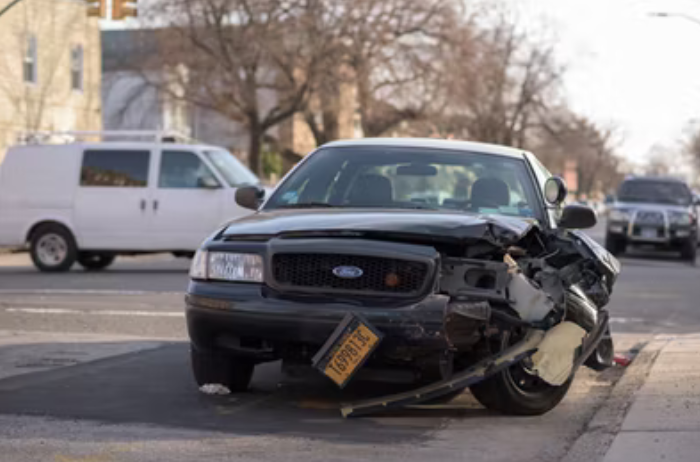
In recent times, collision avoidance has been a work in progress for self-driving cars.
It is a crucial part of car navigation as it can help you avoid static and moving obstacles of irregular shapes. Self-driving cars are still a far-sighted goal for public use. But have you ever been in a situation when you were suddenly at risk of colliding—a car abruptly braking next to you, an animal leaping into the road, a diversion that diverted your focus away? What was your reaction? Were you able to respond quickly enough? Is it true that mishaps are unavoidable?
Despite best practices, traffic rules, and various safety campaigns, collisions occur. It’s no wonder that engineers have chosen to approach this challenge from an automated perspective. The National Highway Traffic Safety Administration (NHTSA) and 20 major manufacturers agreed in 2016 to make electronic emergency braking a standard feature in all new cars by 2022. While these technologies cannot prevent every collision, they have demonstrated their power of reducing the likelihood of an impact.
One of the most significant aspects of safe driving is collision avoidance. Integrated trajectory control, side collision avoidance, fuzzy hazard level detection, collision avoidance at road intersections, collision avoidance, and vehicle stabilization are some of the scenarios and techniques for obstacle detection in the case of a single AV driving. This technology assists you in avoiding or reducing the impact of a car collision. The system may use artificial intelligence (AI), a dash camera, and GPS technology to help you detect an impending collision. When a collision is imminent, a CAS alerts you via sound, light, or both so you can take action to avoid an accident.
What Is Collision Avoidance System?
A collision avoidance system (CAS) is a sophisticated driver-assistance system that can help to prevent or reduce the severity of an accident. It is also known as pre-collision technology, forward-collision warning, or collision mitigation system. In its most basic version, a forward-collision warning system analyses a vehicle’s speed, the speed of the vehicle in front of it, and the space between the truck to warn the user if they are too close, possibly avoiding an accident.
How Does It Work?
Collision warning system sensors inspect the route regularly and send messages to the sensor. The data will be analyzed by the sensor and sent to the system.
The system’s functionality splits into two parts from here: warning only and direct control.
The sensors are put in new vehicles once they have passed all of the automotive accident tests safely. The crash avoidance system identifies the speed of other cars on the highway or any immovable objects along the route.
If the collision is avoided, it will just issue a series of beeps and sounds to alert you. The system issues the following important alerts.
Collision avoidance alert systems use radar, lasers, and cameras to detect potential collisions in the following way:
Forward-collision warning (FCW):
A visual and/or audio warning system that alerts the driver to the possibility of a collision. This technology has already resulted in a 27 percent reduction in front-to-rear crashes, according to the IIHS.
Blind-spot warning (BSW):
A visual and/or audio message when a vehicle is in the driver’s blind spot in a neighboring lane; if a turn indicator is employed while a vehicle is in the blind spot, an extra alert may sound. In vehicles with this capacity, IIHS tests show a 14 percent drop in lane-change accidents and a 23 corresponding decrease in lane-change crashes involving injuries.
Cross Traffic Warning:
If an object is currently out of camera range but appears to be moving into it, a visual, auditory, or tactile alarm will be displayed. According to studies, reversal crashes have decreased by 22%.
Lane Departure Warning (LDW):
A visual, aural, or tactile notice that a vehicle is breaching lane markings. This technology has resulted in an 11 percent reduction in rear-end collisions & head-on collisions and a 21 percent reduction in injuries in both types of impacts.
Assist drivers:
The collision avoidance system’s operation is becoming more sophisticated and efficient. Newer cars have a system that not only warns drivers but also aids them in avoiding danger. However, it can only function if all of the vehicle’s components are in good operating order. Here are several self-contained actions that will keep you safe in a crash.
How Can Collision Avoidance System Help Drivers?
Some collision-avoidance systems help drivers by providing warnings and alerts. These technologies will take control of the vehicle’s throttle and brakes, bypassing the driver. The technologies used to inform these systems, including radar, lasers, and cameras, are comparable to alarms, but the vehicle’s response is more proactive. The following are examples of collision avoidance features that actively aid drivers:
Adaptive Cruise Control:
These systems, which are more preventive than reactive, employ radar or lasers to alter your autopilot speed via throttle to keep a safe distance from the car in front of you.
Automatic Emergency Braking (AEB):
Brakes are deployed automatically in response to sensor data to avoid or reduce the pace of a collision.
Rear Automatic Emergency Braking:
A cross-traffic monitoring system or sensors such as radar or lasers are used to automatically apply brakes to avoid the vehicle from backing into an object.
Electronic Stability Control (ESC):
ESC is an evolution of antilock brake technology. It applies your brakes automatically to assist you in steering the automobile appropriately after a lack of traction. An Integrated computer with various sensors decides which wheels should be slowed and which should be accelerated.
Parking Assist:
Vehicles may maneuver into a parking spot using data from cameras and sensors while the driver has control of the speed.
Final Note- How Do I Avoid Collisions?
The Collision Avoidance System might alert you of possible collisions but unfortunately cannot eliminate accidents, but there are a few ways that can keep you away from these incidents:
- You have to avoid distractions in the car at all costs. Turn off your phone, don’t eat, and stay away from other in-car distractions. Concentrate on the task at hand: driving your car and securely arriving at your destination.
- Make use of your side and rear view mirrors. To keep track of other drivers on the road, check your side and rear mirrors frequently. When backing into a parking spot, these mirrors are helpful since they enable you to see any approaching traffic and how close you are to cars around and behind you.
- Observe the Road Rules. Remember to pay attention to stop signs; if you drive through one, you risk a side crash. Also, avoid the urge to race past a yellow light and wait a few moments after a red light turns green before pressing down on your car’s accelerator.
Become a Harlem Insider!
By submitting this form, you are consenting to receive marketing emails from: Harlem World Magazine, 2521 1/2 west 42nd street, Los Angeles, CA, 90008, https://www.harlemworldmagazine.com. You can revoke your consent to receive emails at any time by using the SafeUnsubscribe® link, found at the bottom of every email. Emails are serviced by Constant Contact








